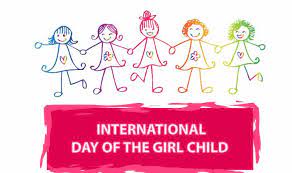Description of the Situation
On 9 April 2024, the IHR NFP of Viet Nam notified WHO of one human infection with an avian influenza A(H9N2) virus.
The patient is a 37-year-old male from Tien Giang Province, Viet Nam, who had underlying conditions. The patient developed a fever on 10 March 2024 and was admitted to the hospital on 16 March. Following a diagnosis of severe pneumonia with bilateral pleural effusions, he was transferred to the intensive care unit (ICU) on 21 March and received treatment with oseltamivir and antibiotics. As of 15 April, the patient was still in severe condition and under intensive care.
The patient was detected through severe viral pneumonia surveillance (SVP). A nasopharyngeal swab was collected on 21 March, and the test result revealed positive avian influenza A with similar H9-strain gene segments on 22 March. On 1 April, Pasteur Institute in Ho Chi Minh City (PI HCMC) performed PCR testing, which confirmed the presence of avian influenza A(H9) virus. Subsequently, virus subtyping confirmed avian influenza A(H9N2) on 8 April.
Case investigation identified that the patient lives near a poultry market, where poultry trade occurs daily in front of his house. There have been no reports of dead or sick poultry near the patient’s residence or of consumption of sick, dead, or uncooked poultry products from his household or neighbouring households. However, influenza A(H9N2) is not highly pathogenic in poultry. On 2 April, seven poultry samples were collected from two live bird trading points within the same commune. One sample was positive A(H5N1); the remaining were negative for avian influenza A(H5N1), A(H5N6), A(H5N8), A(H7N9), and A(H9). On 4 April, samples were taken from two geese at the patient’s house, which tested negative for A(H5) and A(H9).
Fifteen close contacts of the case have been requested to self-monitor their health at home. As of 15 April, there have been no reports of new cases with respiratory symptoms among contacts of the case or outbreaks in the community where the case resides.
This is the first human infection with avian influenza A(H9N2) reported in Viet Nam.
Epidemiology
Influenza viruses natural reservoir is wild water birds, but some influenza viruses may infect poultry and mammals, including humans. Infections in humans have primarily been acquired through direct contact with infected animals or contaminated environments. Avian influenza virus infections in humans may cause diseases ranging from mild upper respiratory tract infection to more severe diseases and can be fatal. Conjunctivitis, gastrointestinal symptoms, encephalitis and encephalopathy have also been reported.
Laboratory tests are required to diagnose human infection with influenza. WHO periodically updates technical guidance protocols for the detection of zoonotic influenza using molecular methods, e.g. RT-PCR. Evidence suggests that some antiviral drugs, notably neuraminidase inhibitors (oseltamivir, zanamivir), can reduce the duration of viral replication and improve prognosis in some cases.
To date, globally there have been 99 cases of human avian influenza A(H9N2) infections, including two deaths, reported to WHO since 2015.
Public Health Response
The government of Viet Nam has taken the following public health response actions:
- PI HCMC and Ho Chi Minh City Center for Disease Control (HCDC), in cooperation with the Tien Giang Provincial CDC, have conducted investigations, contact tracing, and disinfection of the patient’s residence and suspected exposure areas.
- Local public health and animal health sectors cooperated for further investigation, contact tracing and testing for possible detection of potential additional cases and/or outbreaks of avian influenza A(H9N2) or other strains in humans and poultry.
- On 5 April, the Ministry of Health issued a press release containing detailed information about the case and provided public health messages on proactive disease prevention and control measures.
WHO Risk Assessment
Most human cases of infection with avian influenza A(H9N2) viruses are exposed to the virus through contact with infected poultry or contaminated environments. Human infection tends to result in mild clinical illness. Further human cases can be expected since the virus continues to be detected in poultry populations. No clusters of cases have been reported.
Currently available epidemiological and virological evidence suggests that this virus has not acquired the ability to be sustained in transmission among humans. Thus, the likelihood of human-to-human spread is low. Should infected individuals from affected areas travel internationally, their infection may be detected in another country during travel or after arrival. If this were to occur, further community-level spread is considered unlikely as this virus has not acquired the ability to transmit easily among humans.
WHO Advice
This case does not change the current WHO recommendations on public health measures and influenza surveillance. A thorough investigation of every human infection is essential.
The public should avoid contact with high-risk environments such as live animal markets/farms and live poultry or surfaces that might be contaminated by poultry droppings. Hand hygiene, with frequent washing or the use of alcohol hand sanitizer, is recommended. WHO does not recommend any specific different measures for travelers.
All human infections caused by a new subtype of influenza virus are notifiable under the IHR (2005). State Parties to the IHR (2005) are required to immediately notify WHO of any laboratory-confirmed case of a recent human infection caused by an influenza A virus with the potential to cause a pandemic.
WHO advises against applying any travel or trade restrictions based on the current information available on this event.
Further Information
- HQ Global influenza programme, human-animal interface: https://www.who.int/teams/global-influenza-programme/avian-influenza
- WHO Monthly Risk Assessment Summary: Influenza at the human-animal interface: https://www.who.int/teams/global-influenza-programme/avian-influenza/monthly-risk-assessment-summary
- WPRO Avian Influenza Weekly Update: https://www.who.int/westernpacific/emergencies/surveillance/avian-influenza
- Protocol to investigate non-seasonal influenza and other emerging acute respiratory diseases: https://www.who.int/publications-detail-redirect/WHO-WHE-IHM-GIP-2018.2
- Maintaining surveillance of influenza and monitoring SARS-CoV-2 – adapting Global Influenza surveillance and Response System (GISRS) and sentinel systems during the COVID-19 pandemic: https://www.who.int/publications/i/item/maintaining-surveillance-of-influenza-and-monitoring-sars-cov-2-adapting-global-influenza-surveillance-and-response-system-(gisrs)-and-sentinel-systems-during-the-covid-19-pandemic
- Case definitions for the four diseases requiring notification in all circumstances under the International Health Regulations (2005): https://www.who.int/publications/m/item/case-definitions-for-the-four-diseases-requiring-notification-to-who-in-all-circumstances-under-the-ihr-(2005)
- Case information of influenza A (H9) in Tien Giang Province. The Department of Preventive Medicine, Ministry of Health, Viet Nam: https://vncdc.gov.vn/thong-tin-ve-truong-hop-mac-cum-ah9-tai-tien-giang-nd17502.html
Citable reference: World Health Organization (19 April 2024). Disease Outbreak News; Avian Influenza A(H9N2) in Viet Nam. Available at: https://www.who.int/emergencies/disease-outbreak-news/item/2024-DON514












